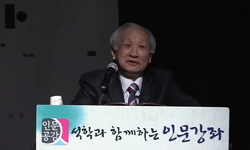This paper aims to reconstruct the change of the northeastern border of Silla after King Jinheung, including data that were not noticed previously, and examined the structure of the border. It is well known that Silla entered the Hamheung area in the ...
http://chineseinput.net/에서 pinyin(병음)방식으로 중국어를 변환할 수 있습니다.
변환된 중국어를 복사하여 사용하시면 됩니다.
- 中文 을 입력하시려면 zhongwen을 입력하시고 space를누르시면됩니다.
- 北京 을 입력하시려면 beijing을 입력하시고 space를 누르시면 됩니다.
https://www.riss.kr/link?id=A106494354
-
저자
박성현 (계명대학교)
- 발행기관
- 학술지명
- 권호사항
-
발행연도
2019
-
작성언어
Korean
-
주제어
신라 ; 경계 ; 진흥왕 ; 함흥 ; 비열홀 ; 정천군 ; 탄항관문 ; Silla ; border ; King Jinheung ; Hamheung ; Biyeolhol ; Chunjeong County ; Tanhang Gateway
-
등재정보
KCI등재
-
자료형태
학술저널
-
수록면
7-38(32쪽)
-
KCI 피인용횟수
4
- DOI식별코드
- 제공처
- 소장기관
-
0
상세조회 -
0
다운로드
부가정보
다국어 초록 (Multilingual Abstract)
In addition, I examined the specific structure of the boundary created in this way. I paid attention to the “Cheolgwan (gateway) Station” and “Cheolgwan (gateway)” in Deokwon, Shincheongdonggukyeojiseungram, and the ruins of wall, north of Deokwon surveyed during the Japanese rule. In other words, they are estimated to be the 'Tanhang Gateway' and 'Northern Great Wall' respectively. However, Niha, the boundary between Silla and Bohae, was identified as the Geumya River (formerly Yongheung River), which is farther north, ie, a kind of buffer zone existed between the gate and the boundary, again the boundary and the gate of Balhae.
This paper aims to reconstruct the change of the northeastern border of Silla after King Jinheung, including data that were not noticed previously, and examined the structure of the border. It is well known that Silla entered the Hamheung area in the reign of King Jinheung, but there is controversy over how to advance and when to retreat. In this paper, Silla was taken over by the treaty with Goguryeo and took over the east coast, and based on the exchange story between Goguryeo and Wa in the early 570s, Goguryeo recovered this region shortly after 568 years. Criticized It would be appropriate to look at the article in the Japanese book as a drift of the local people and exchanges between the elite and the local area rather than the exchange of official envoys. And based on the Silla hill fortress and burial mounds in the Hamgyongnam-do region surveyed in North Korea in the early 1960s, Silla said that it had dominated the region for quite some time. Silla's loss of the region was associated with the exploitation of 33 provinces in North Korea by Goguryeo and Malgal in 655. The reconstruction of Anbyeon area is related to the surrender of Yeon Jeongto with 12 fortresses in 666, as discussed earlier. However, during the Silla-Tang War, the area was lost again, and the border was cleared in 681 by securing Biyeolhol and Jeongcheon and building Northern Great Wall in 721.
In addition, I examined the specific structure of the boundary created in this way. I paid attention to the “Cheolgwan (gateway) Station” and “Cheolgwan (gateway)” in Deokwon, Shincheongdonggukyeojiseungram, and the ruins of wall, north of Deokwon surveyed during the Japanese rule. In other words, they are estimated to be the 'Tanhang Gateway' and 'Northern Great Wall' respectively. However, Niha, the boundary between Silla and Bohae, was identified as the Geumya River (formerly Yongheung River), which is farther north, ie, a kind of buffer zone existed between the gate and the boundary, again the boundary and the gate of Balhae.
국문 초록 (Abstract)
아울러 이와 같이 만들어진 경계의 구체적인 구조에 대해서 고찰해 보았는데, 『신증동국여지승람』 덕원도호부조에 보이는 ‘철관역’과 ‘철관’, 그리고 일제 시대에 조사된 덕원 북쪽의 장성 유적에 주목하였다. 즉 이들을 각각 ‘탄항관문’과 ‘북경 장성’으로 추정하였다. 그렇지만 신라와 발해의 경계인 ‘니하’는 이보다 북쪽인 금야강(구 용흥강)으로 파악했는데, 즉 관문과 경계, 다시 경계와 발해의 관문 사이에 일종의 완충 지대가 존재한 것으로 보았다.
본고에서는 기존에 주목하지 못했던 자료들을 포함하여 진흥왕대 이후 신라 동북 경계의 변천에 대해서 다시 정리하고, 경계의 구체적인 구조에 대해서 고찰하였다. 진흥왕대 신라가 함흥 ...
본고에서는 기존에 주목하지 못했던 자료들을 포함하여 진흥왕대 이후 신라 동북 경계의 변천에 대해서 다시 정리하고, 경계의 구체적인 구조에 대해서 고찰하였다. 진흥왕대 신라가 함흥 일대에 진출한 사실은 잘 알려져 있지만, 진출 방식과 후퇴 시점에 대해서는 논란이 있다. 본고에서는 신라가 고구려와의 화약을 통해 이 지역을 양도받아 동해안을 따라서 점령해 들어간 것으로 보았으며, 570년대 초 고구려와 왜의 교류 기사를 바탕으로 고구려가 568년 직후 이 지역을 회복한 것으로 본 견해를 비판하였다. 『일본서기』의 해당 기사는 정식 사절의 교류보다는 동예 지역민의 표류, 동예와 越 지역 사이의 교류로 보는 것이 적절할 것이다. 그리고 1960년대 초 북한에서 조사된 함경남도 지역의 신라 성지 및 고분군을 바탕으로 신라가 이 지역을 상당 기간 영역 지배하였음을 밝혔다. 신라가 이 지역을 상실한 것은 655년 고구려와 말갈에 의한 北境 33성의 탈취와 관련이 있는 것으로 보았다. 신라가 이 일대 중 안변 지역을 다시 회복한 것은 기존의 논의와 같이 666년 연정토가 12성을 들어 항복한 것과 관련이 있는 것으로 정리하였다. 그렇지만 나당 전쟁기에 다시 이 지역을 상실하였는데, 681년에 비열홀과 천정군을 확보하고 721년에 북경 장성을 쌓으면서 경계를 확정하게 되었다.
아울러 이와 같이 만들어진 경계의 구체적인 구조에 대해서 고찰해 보았는데, 『신증동국여지승람』 덕원도호부조에 보이는 ‘철관역’과 ‘철관’, 그리고 일제 시대에 조사된 덕원 북쪽의 장성 유적에 주목하였다. 즉 이들을 각각 ‘탄항관문’과 ‘북경 장성’으로 추정하였다. 그렇지만 신라와 발해의 경계인 ‘니하’는 이보다 북쪽인 금야강(구 용흥강)으로 파악했는데, 즉 관문과 경계, 다시 경계와 발해의 관문 사이에 일종의 완충 지대가 존재한 것으로 보았다.
참고문헌 (Reference)
1 김선민, "六세기 후반 倭의 高句麗 인식-『日本書紀』기사 분석을 중심으로-" 일본사학회 (22) : 5-10, 2005
2 한석정, "함경남도의 유래 미상의 산성들과 고분들에 대하여" 1962 (1962): 60-80, 1962
3 김종복, "특집논문:남북국의 경계와 상호 교섭에 대한 재검토" 한국역사연구회 (82) : 27-56, 2011
4 박성현, "특집논문:5~6세기 고구려·신라의 경계와 그 양상" 한국역사연구회 (82) : 57-96, 2011
5 류병흥, "위대한 수령 김일성동지의 현명한 령도밑에 고고학분야에서 이룩한 성과" 1992 (1992): 2-8, 1992
6 박성현, "삼국통일 후 신라의 지방 제도, 얼마나 달라졌나?" 역사문제연구소 (127) : 263-285, 2019
7 박진욱, "동해안일대의 신라무덤에 대하여" 1967 (1967): 12-19, 1967
8 량익룡, "동해안 일대의 신라 산’봉우리성에 관한 연구" 1964 (1964): 31-43, 1964
9 노태돈, "고구려사 연구" 사계절 1999
10 장창은, "고구려 남방 진출사" 경인문화사 2014
1 김선민, "六세기 후반 倭의 高句麗 인식-『日本書紀』기사 분석을 중심으로-" 일본사학회 (22) : 5-10, 2005
2 한석정, "함경남도의 유래 미상의 산성들과 고분들에 대하여" 1962 (1962): 60-80, 1962
3 김종복, "특집논문:남북국의 경계와 상호 교섭에 대한 재검토" 한국역사연구회 (82) : 27-56, 2011
4 박성현, "특집논문:5~6세기 고구려·신라의 경계와 그 양상" 한국역사연구회 (82) : 57-96, 2011
5 류병흥, "위대한 수령 김일성동지의 현명한 령도밑에 고고학분야에서 이룩한 성과" 1992 (1992): 2-8, 1992
6 박성현, "삼국통일 후 신라의 지방 제도, 얼마나 달라졌나?" 역사문제연구소 (127) : 263-285, 2019
7 박진욱, "동해안일대의 신라무덤에 대하여" 1967 (1967): 12-19, 1967
8 량익룡, "동해안 일대의 신라 산’봉우리성에 관한 연구" 1964 (1964): 31-43, 1964
9 노태돈, "고구려사 연구" 사계절 1999
10 장창은, "고구려 남방 진출사" 경인문화사 2014
11 방용철, "麗・濟 連和說의 재검토" 민족문화연구소 (62) : 277-314, 2016
12 서영교, "高句麗 平原王代 南進과 遣倭使" 효원사학회 41 : 105-137, 2012
13 池內宏, "眞興王の戊子巡境碑と新羅の東北方" 吉川弘文館 (二) : 1-96, 1960
14 松井等, "滿洲歷史地理 1" 丸善株式會社 407-441, 1913
15 赤羽目匡由, "渤海王国の政治と社会" 吉川弘文館 2011
16 津田左右吉, "朝鮮歷史地理 1" 丸善株式會社 206-220, 1913
17 太田秀春, "朝鮮城地實測圖와 倭城 -朝鮮總督府의 植民地 支配와관련하여-" 25 : 135-191, 2000
18 平野卓治, "日本 古代史料에 보이는 倭王權日本律令國家와 高句麗" 고구려발해학회 (18) : 101-144, 2004
19 전덕재, "新羅의 東北地方 國境과 그 變遷에 관한 고찰" 국방부군사편찬연구소 (91) : 149-193, 2014
20 李成市, "古代東アジアの民族と國家" 岩波書店 381-384, 1998
21 李成市, "古 代東アジアの民族と國家" 岩波書店 287-314, 1998
22 조이옥, "<<新唐書>> 新羅傳長人記事의 長人國 -新羅의 靺鞨認識과 관련하여" 부경역사연구소 (19) : 35-51, 2006
23 주보돈, "5~6세기 중엽 高句麗와 新羅의 관계 -신라의 漢江流域 진출과 관련하여" 11 : 65-115, 2006
24 노중국, "5~6세기 고구려와 백제의 관계 -고구려의 한강유역 점령과 상실을 중심으로" 11 : 7-64, 2006
25 이성제, "570年代 高句麗의 對倭交涉과 그 意味-새로운 對外戰略의 추진 배경과 내용에 대한 재검토" 한국고대사탐구학회 (2) : 53-93, 2009
동일학술지(권/호) 다른 논문
-
- 계명대학교 한국학연구원
- 장인진
- 2019
- KCI등재
-
- 계명대학교 한국학연구원
- JIANG XIUYU
- 2019
- KCI등재
-
- 계명대학교 한국학연구원
- GAO XINGAI
- 2019
- KCI등재
-
제4차 산업혁명과 『논어』를 활용한 대학 인성교육 프로그램 개발
- 계명대학교 한국학연구원
- 이현지
- 2019
- KCI등재
분석정보
인용정보 인용지수 설명보기
학술지 이력
| 연월일 | 이력구분 | 이력상세 | 등재구분 |
|---|---|---|---|
| 2022 | 평가예정 | 재인증평가 신청대상 (재인증) | |
| 2019-01-01 | 평가 | 등재학술지 유지 (계속평가) |  |
| 2016-01-01 | 평가 | 등재학술지 유지 (계속평가) |  |
| 2012-02-27 | 학회명변경 | 영문명 : institute of korean studes -> Academia Koreana |  |
| 2012-01-01 | 평가 | 등재학술지 유지 (등재유지) |  |
| 2009-01-01 | 평가 | 등재학술지 선정 (등재후보2차) |  |
| 2008-01-01 | 평가 | 등재후보 1차 PASS (등재후보1차) |  |
| 2006-01-01 | 평가 | 등재후보학술지 선정 (신규평가) |  |
학술지 인용정보
| 기준연도 | WOS-KCI 통합IF(2년) | KCIF(2년) | KCIF(3년) |
|---|---|---|---|
| 2016 | 0.57 | 0.57 | 0.57 |
| KCIF(4년) | KCIF(5년) | 중심성지수(3년) | 즉시성지수 |
| 0.56 | 0.61 | 1.133 | 0.03 |




 KCI
KCI DBpia
DBpia







